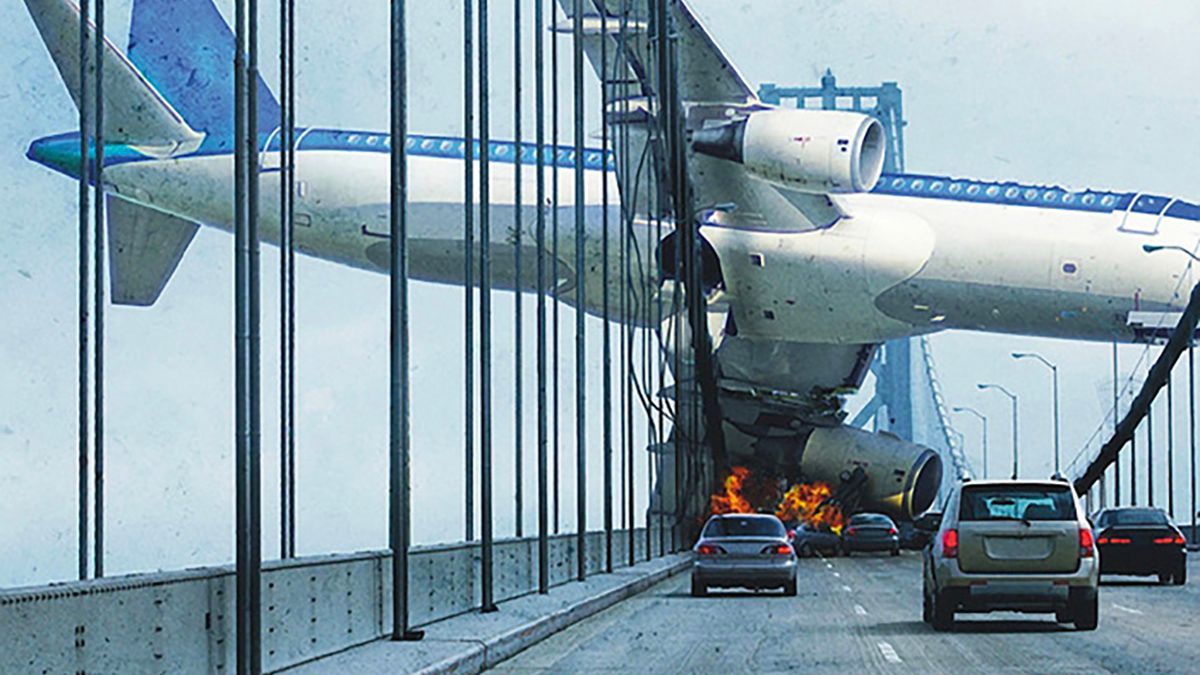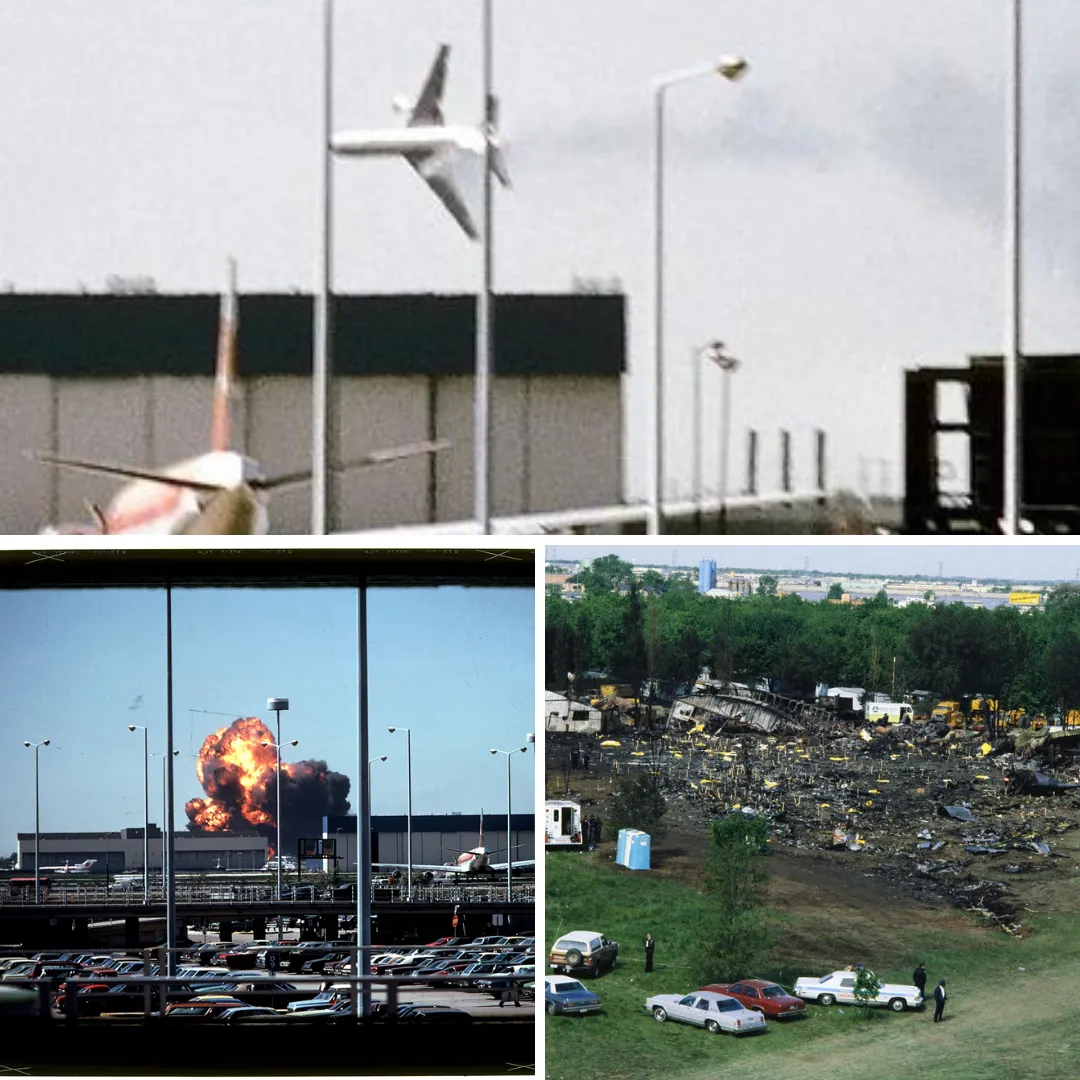
The Tragic Story of Air Florida Flight 90: A Disaster That Could Have Been Avoided
In the cold afternoon of January 13, 1982, Air Florida Flight 90 took off from Washington DC’s Reagan Airport, bound for Fort Lauderdale, Florida, unaware that it was about to become one of the most tragic and catastrophic events in aviation history. The Boeing 737, carrying 74 passengers and 5 crew members, found itself in a deadly race against time, with the lives of everyone aboard hanging in the balance as the aircraft struggled to stay airborne over the icy waters of the Potomac River.
What followed was a series of mistakes and misjudgments that led to the plane crashing into the 14th Street Bridge, resulting in a deadly plunge into the icy river. Despite the pilots' efforts, there was no avoiding the inevitable tragedy. But how did they find themselves in this situation, and what lessons can we learn from it?
A Cold Day and a Lack of Preparation
It was a particularly cold winter day, and the storm that battered the region was wreaking havoc across the eastern half of the United States. Washington’s Reagan Airport was closed for snow-clearing operations, creating delays that would soon become critical. As the passengers boarded the flight, they had no idea that they were about to be part of a deadly cautionary tale.
The flight's captain, 34-year-old Larry Wheaton, was an experienced pilot with over 8,000 flight hours under his belt. However, Wheaton was relatively inexperienced when it came to flying in winter conditions. He had only recently transitioned to flying jets, and though he had flown in cold weather before, he was still unprepared for the magnitude of the challenges that awaited him. In fact, Wheaton had a checkered history as a pilot. Just two years earlier, he had been suspended from flying after failing multiple proficiency tests. Despite this, he was still entrusted with the responsibility of flying Flight 90 that fateful day.
The first officer, 31-year-old Roger Pettit, was more experienced, having flown nearly 3,500 hours, many of which were in military aircraft. However, like Wheaton, Pettit also had limited experience flying commercial jets in snowy conditions, having only flown a couple of flights under such circumstances. This lack of preparation would soon prove to be a fatal flaw.
Snow, Ice, and a Stubborn Decision
As the plane waited to take off, the crew faced one of the most dangerous conditions for aviation: ice accumulation on the aircraft's wings. The very shape of an airplane's wings is crucial to its ability to fly, and even a small amount of ice can significantly disrupt its aerodynamic properties. With snow accumulating on the wings, the pilots were aware of the danger but chose to proceed without fully assessing the risks.
The crew ordered the aircraft to be de-iced before takeoff, a necessary procedure in cold weather. However, the de-icing fluid would only last a short time, and the decision to delay a second de-icing until just before departure would prove disastrous. As more snow built up on the wings, the pilots did not fully appreciate the gravity of the situation. They believed that a second de-icing would suffice, but they failed to account for the amount of ice that had already accumulated.
After a delay in getting the aircraft back to the gate, Captain Wheaton made another questionable decision: he asked the tug operator to push the plane back using the reverse thrust of the engines, a move that was strictly against procedures. The idea was to clear the snow, but this decision only made matters worse, as the melting snow froze again on the wings, compounding the issue of ice accumulation.
A Series of Unfortunate Decisions
As the plane finally began taxiing toward the runway, the pilots rushed through the pre-flight checklist. One critical step was missed: the engine anti-ice system was not turned on. This system is designed to prevent ice from forming in the engine’s vital parts, but the pilots, distracted by their haste and unfamiliarity with the conditions, overlooked this important step.
Meanwhile, the de-icing fluid on the wings was quickly losing its effectiveness, and snow continued to accumulate. The pilots were aware of the growing risk but did not take the necessary action to mitigate it. They were in a bind—having waited in a long queue of planes, they did not want to lose their place in line and face further delays. As they inched forward, the snow on the wings continued to build, and crucially, ice began to form at the wingtips.
This ice created dangerous aerodynamic characteristics, reducing the lift on the wings and causing the plane to behave unpredictably during takeoff. Yet, the pilots continued to push forward without fully grasping the danger. Their lack of experience in winter weather operations became glaringly obvious, and their complacency about the risks would cost them dearly.
The Final Moments
As the plane lined up on the runway, the pilots were under increasing pressure to take off quickly. Air traffic control had cleared them for immediate departure, and behind them, a faster-moving aircraft was closing in. The pilots, aware of the looming danger of a potential collision, pushed the throttles forward. However, the plane’s acceleration was sluggish, and the readings on the engine instruments were erratic.
Despite this, Captain Wheaton remained determined to get the plane airborne. He continued with the takeoff, even as the first officer hesitated. When the plane reached the critical speed for takeoff, the first officer pulled back on the controls, but the plane pitched up abruptly due to the accumulated ice on the wings. The aircraft struggled to climb, and the stall warning system activated, alerting the crew that they were on the brink of losing control.
The pilots tried to recover, but the combination of ice, faulty engine readings, and the plane's sluggish acceleration meant that they couldn’t gain enough speed or altitude. Just moments after takeoff, the plane lost altitude, crashing into the 14th Street Bridge and plunging into the icy Potomac River below.
The Aftermath

In the aftermath of the crash, only six survivors were found in the frigid waters of the river, and only five would survive the ordeal. The crash claimed the lives of 74 passengers and crew, as well as four people on the bridge. The National Transportation Safety Board (NTSB) conducted an investigation into the disaster, which revealed several key factors that contributed to the crash, including the lack of winter weather training for the pilots and the airline's failure to properly assess the captain’s qualifications.
The NTSB also criticized Captain Wheaton for making a series of poor decisions, including using reverse thrust at the gate, failing to turn on the engine anti-ice system, and not aborting the takeoff when it became clear that the situation was dangerously unstable.
Lessons Learned
The tragedy of Flight 90 led to significant changes in the aviation industry. Pilots now receive more extensive training on the dangers of icing, and airports have implemented de-icing systems that are much more effective. The industry as a whole has developed a much healthier respect for the risks posed by icy conditions, and the procedures for winter operations have been drastically improved.
Today, the lessons learned from the crash of Air Florida Flight 90 have helped to make air travel in winter weather much safer. However, the memory of the disaster remains a stark reminder of how quickly things can go wrong when pilots are unprepared and when critical safety procedures are ignored.
This tragic incident highlights the importance of thorough training, adherence to procedures, and the need for constant vigilance in the face of unpredictable weather conditions. The lives lost in this disaster continue to serve as a somber reminder that, in aviation, safety can never be taken for granted.

-1750068259-q80.webp)


